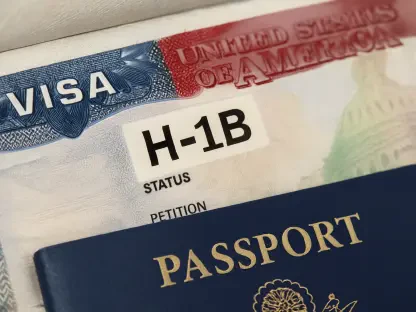Listen to the Article
Poor financial forecasting leads to missed growth opportunities, cash flow disruptions, and operational inefficiencies. Inaccurate projections can delay hiring, derail product launches, and leave sales teams pursuing unrealistic targets. But with the rise of advanced analytics and data-driven tools, businesses now have the means to forecast with greater precision and confidence.
A recent survey conducted by PwC demonstrates that only 29% of companies have confidence in their cash flow forecasting capability. Estimating cash outflows can be challenging, but analyzing past figures and ensuring proper invoice documentation can lead to accurate estimates. This article explains how data analytics, historical patterns, and a modern Set of digital tools can help a business become more accurate in its financial projections and make more data-based decisions.
Understanding the Significance of Forecasting
The cost of inaccurate forecasting shows up in several key areas:
The Strategic Planning Impact: When estimations are frequently inaccurate, it can create challenges across various areas of the organization. Marketing cannot solve poorly made campaigns. Product teams cannot decide what features to prioritize, and the finance team cannot provide funding for sales tools or hire new staff.
Problems with Resource Allocation: Ineffective estimates can result in excessive costs of overstaffing or understaffing, leading to missed growth opportunities. A gap in projection might enable some customers to realize that they had been spending too much on marketing in their most successful market. They did not spend enough money in a developing market with more potential because of gaps in their forecasts.
Market Opportunity Loss: Without an accurate financial projection, you can miss market opportunities or not notice the trends early enough to alter your sales strategy. This is especially significant in B2B sales, where long sales cycles are common. The reliability of your trend analysis has a considerable bearing on your ability to capitalize on coming opportunities.
To build a reliable forecast, businesses must first look to the past. Understanding payment history reveals patterns and anomalies that can distort future projections if left unchecked.
Reviewing Past Payment Trends
Review past payment records from the last two to three years to identify trends for forecasting B2B accounts payable:
Keep the encashment history of major suppliers to define the average days of payable outstanding and the percentage of on-time and overdue payments.
Compute year-to-year changes in spending by vendor category. Significant changes in expenditure against major suppliers may distort forecasts, depending on how one looks at them. Adjust the projection according to future projects, contracts, or business activities that can change the buying.
Evaluate payment terms to determine the possibility of a better cash flow. Whenever the DPO of the company is relatively low compared to other firms in the same industry, then the flexibility of the cash flow can be augmented by using virtual cards as opposed to the traditional methods of making payments.
View personal or non-repeating payments from the last year. Do not include these in the forecast unless similar payments are being made, as they may inflate the estimates. One-off payments can be hard to predict. Be aware that seasonal changes might affect cash flow in the future.
Once historical patterns are understood, the next step is ensuring the quality of the current financial data feeding your forecasts. This begins with better invoice practices.
Generate Comprehensive Invoices
Aging of payment details will only be limited in case the invoices are not elaborate. Detailed billing helps firms accurately estimate accounts payable by providing transaction specifics. Good invoices include all costs: quantities, unit prices, taxes, discounts, and processing fees, offering transparency that minimizes hidden costs. Additionally, it allows businesses to foresee their obligations and negotiate better terms, providing funds to cover terms of payment, unpaid balances, supplier contracts, and contract fulfillment.
Together, these actions lay the groundwork for smarter cash management decisions. By forecasting accounts payable more precisely, businesses can protect liquidity, anticipate operational needs, and strengthen supplier relationships.
The Importance of Accurate Accounts Payable Forecasting
Accounts payable forecasts can help a business stay afloat and secure its future. In B2B, where enterprises can use suppliers hand in hand, have lengthy sales prospects, and complicated purchasing procedures, it is essential to know which bills are due. The right projection enables businesses to plan when to run out of cash, prevent liquidity shortages, and organize payments more resourcefully.
With these fundamentals addressed, companies can focus on tools and practices that actively optimize financial control and decision-making.
Optimizing Cash Flow Control
Being aware of your payment history helps you predict future transaction needs and manage cash flow effectively. Your teams may also use prior data to determine problems that can negatively affect the business.
This foundation also empowers financial leaders to adopt a data-first culture and continuously refine forecasts based on real-time business conditions.
Empowering Data-Driven Decisions
With a clearer picture of past challenges and mistakes in managing cash flow, you can create a better and more comprehensive financial plan. With more detailed reports, it is easier to minimize late payments and base your next decision on more accurate predictions.
One often overlooked benefit of precise forecasting is its role in supplier relationship management. Timely, reliable payments foster goodwill and operational resilience.
Strengthening Supplier Partnerships
One of the best ways to build trust is to make sure you pay your suppliers on time every time. This shows that you are reliable and committed to your agreements. If you think you will be late with a payment, contact your suppliers right away and explain the situation. Being open and honest can help maintain trust, even in tough times.
As businesses work to protect against external risks, addressing vulnerabilities in payment security becomes equally crucial. This is where innovative tools like virtual cards can deliver operational and financial advantages.
Boosting Forecasting Accuracy with Virtual Cards
Companies can face significant costs due to accounts payable fraud. Nearly 25% of businesses experience a payment fraud attempt each year, according to Ardent Partners. Accounts payable departments employ other payment mechanisms, such as virtual cards, to minimize the chances of fraud. These cards are meant to be used on a single transaction, are limited to a set number of invoices, and stay valid for less than 30 days.
Virtual cards also facilitate cost-efficiency in financial transactions since they make payments digital and simplify the reconciliation process, which reduces efforts and time in respective activities. Because virtual cards sharply lower the risk of fraudulent payments and unexpected financial losses, they directly improve forecasting accuracy by ensuring accounts payable data reflects actual, verified transactions. These cards are especially effective for specific needs, particularly when processing invoices for high-value purchases from suppliers or vendors.
Real-Time Transaction Insights
With readily available information about the transactions, companies are able to identify and rectify discrepancies, such as duplicated invoices, quickly. This allows them to better forecast in the short run or the long run and have greater assurance of the stability of their cash flow.
Streamlined Automation
For years, companies in the B2B sector have used automation to make Accounts Payable and Receivable processes faster and cheaper. Some payment service providers believe that full automation might not be right for everyone. They suggest keeping some manual processes for better control.
The key to success is to find a balance between high automation and manual tasks when necessary. This reflects a trend in 2024 to offer diverse solutions instead of a “one-size-fits-all” approach in B2B operations. Companies that tailor their services to meet specific needs will have a competitive advantage in 2025 and beyond.
Minimized Fraud Vulnerability
The risk of fraud with virtual card payments and straight-through processing is significantly lower than with traditional ones. Co-share B2B payments reduce fraud risk, ensuring more accurate accounts payable forecasts by minimizing unexpected losses and manual recovery efforts.
Final thoughts
B2B accounts payable forecasting has moved beyond being an art to becoming a very exact science, but nonetheless, it still requires both technology and human knowledge to become successful. Advanced tools and analytics help top businesses develop their strategies and flexibly react to market changes and business realities.
Leaders who want to improve the precision of their projection can see the future: Applying modern technology, following a disciplined approach, and promoting a data-driven culture. This will not only result in better trend analysis but also better business decisions and growth.









